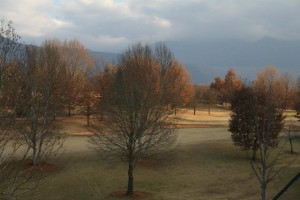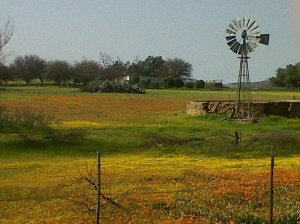 Arbour Day is one day a year that is set aside for the planting of trees. Being forward thinking, Arbour Day is a true conservation effort. Conservation, according to the dictionary is the preservation, maintenance and protection of natural resources for the future good of all. So, one wonders, how did this come about, and who was this forward-thinking person that had the authority to declare a special day on the calendar?
Arbour Day is one day a year that is set aside for the planting of trees. Being forward thinking, Arbour Day is a true conservation effort. Conservation, according to the dictionary is the preservation, maintenance and protection of natural resources for the future good of all. So, one wonders, how did this come about, and who was this forward-thinking person that had the authority to declare a special day on the calendar?
Julius Sterling Morton loved trees and was a born and bred American. In 1855 he bought a section of land and immediately started planting an orchard of 300 trees. He wrote frequently for the Nebraska City News and usually on the value and wisdom of tree planting. He helped organize the Nebraska State Horticultural Society in 1869 and became the president of the State Board of Agriculture. Arbour Day started on January 4, 1872, when Julius Sterling Morton, a member of the Nebraska Board of Agriculture introduced a new resolution which read;
“Wednesday, the tenth day of April, 1872, is hereby especially set apart and consecrated for the planting of trees in the State of Nebraska and the State Board of Agriculture hereby name it Arbour Day to urge upon the people of the State the vital importance of tree planting ….”
 He taught the people living on the treeless plains of Nebraska the value of planting, not only to them, but the plains themselves. Wide publicity was given of the plan and over a million trees were planted in Nebraska on the first Arbour Day. By 1885 Nebraska had 700, 000 acres of planted trees and had been nicknamed “The Tree Planters State”. In 1893 Julius Sterling Morton became the third U. S. Secretary of Agriculture in Cleveland.
He taught the people living on the treeless plains of Nebraska the value of planting, not only to them, but the plains themselves. Wide publicity was given of the plan and over a million trees were planted in Nebraska on the first Arbour Day. By 1885 Nebraska had 700, 000 acres of planted trees and had been nicknamed “The Tree Planters State”. In 1893 Julius Sterling Morton became the third U. S. Secretary of Agriculture in Cleveland.
Arbour Day spurred on the change of public opinion from acceptance of forest destruction toward forest conservation. It was initially only observed by agricultural organizations and towns to encourage the planting of shade and forest trees and shrubbery along highways and on public property. Educators recognized its worth and in 1884 the National Education Association announced the following approval:
“In view of the valuable results of Arbour Day in the six states where this day has been observed, this Association recommends the general observance of Arbour Day for all schools in all our states”.
Arbour Day with its tree planting and fitting ceremonies has grown in popularity and is observed in every state in the United States of America. The observance of Arbour Day has spread to a number of other countries and, as in Australia, is observed as a school festival. In South Africa Arbour Day coincides with Spring Day and is celebrated on the 1st September.
 The importance of trees in our environment can never be emphasized enough. In our homes and offices, trees absorb carbon dioxide, which we exhale (and create in other ways) and turn it into oxygen, which is what we inhale. The natural carbon dioxide cycle keeps a balance in the amount of CO2 in our atmosphere.
The importance of trees in our environment can never be emphasized enough. In our homes and offices, trees absorb carbon dioxide, which we exhale (and create in other ways) and turn it into oxygen, which is what we inhale. The natural carbon dioxide cycle keeps a balance in the amount of CO2 in our atmosphere.
However, our actions and business systems often cause changes which upset this delicate natural balance. We produce excessive amounts of carbon dioxide by burning fossil fuels such as petroleum and coal in our power plants, factories and cars. The human creation of too many greenhouse gases causes an imbalance with heat being trapped in the earth’s atmosphere, increasing the overall average temperature. This in turn affects seasons and rainfall and very much more. Planting trees is one of the most cost-effective ways offsetting our carbon emissions.
The destruction of rainforests and other forests also affects the balancing act. By destroying earth’s natural forestation we threaten the delicate eco-systems that live off of them, under them and because of them and in so doing we threaten our very own existence.
